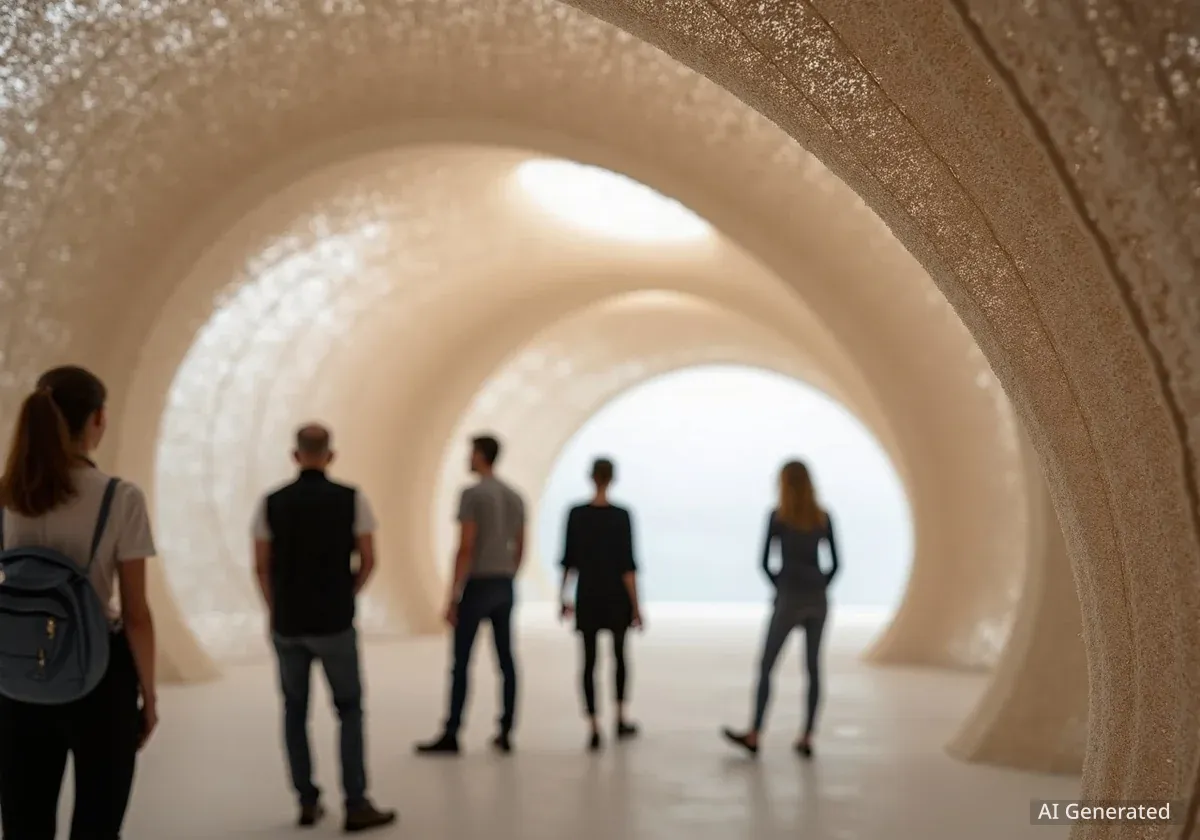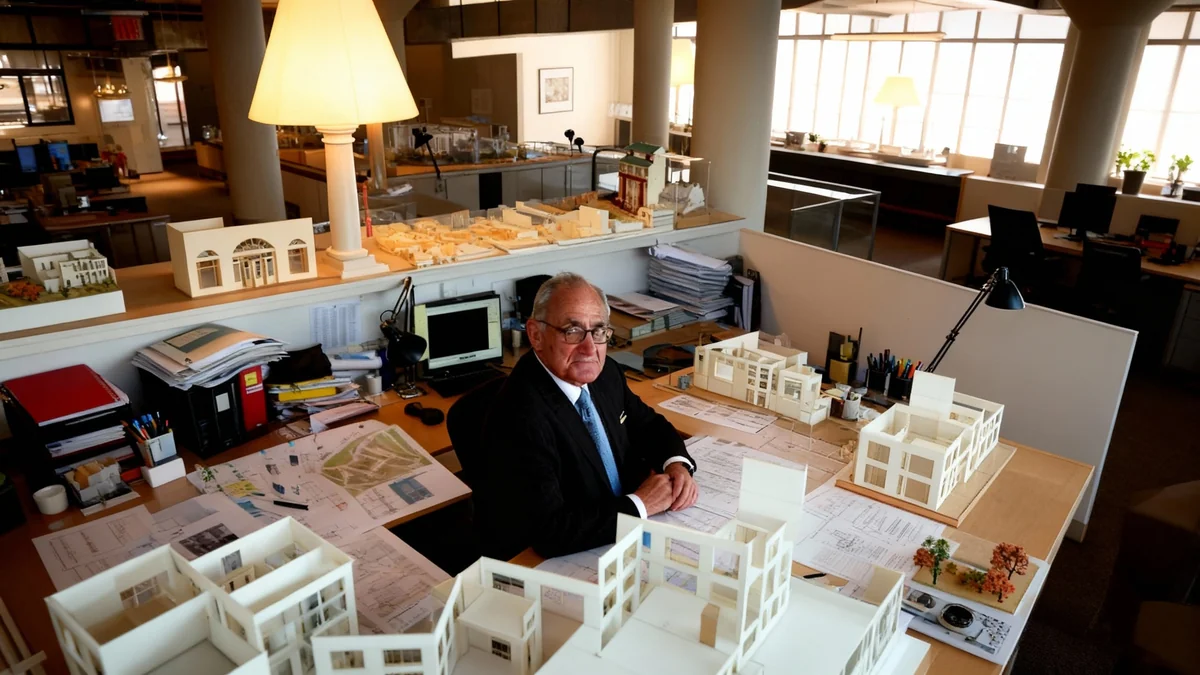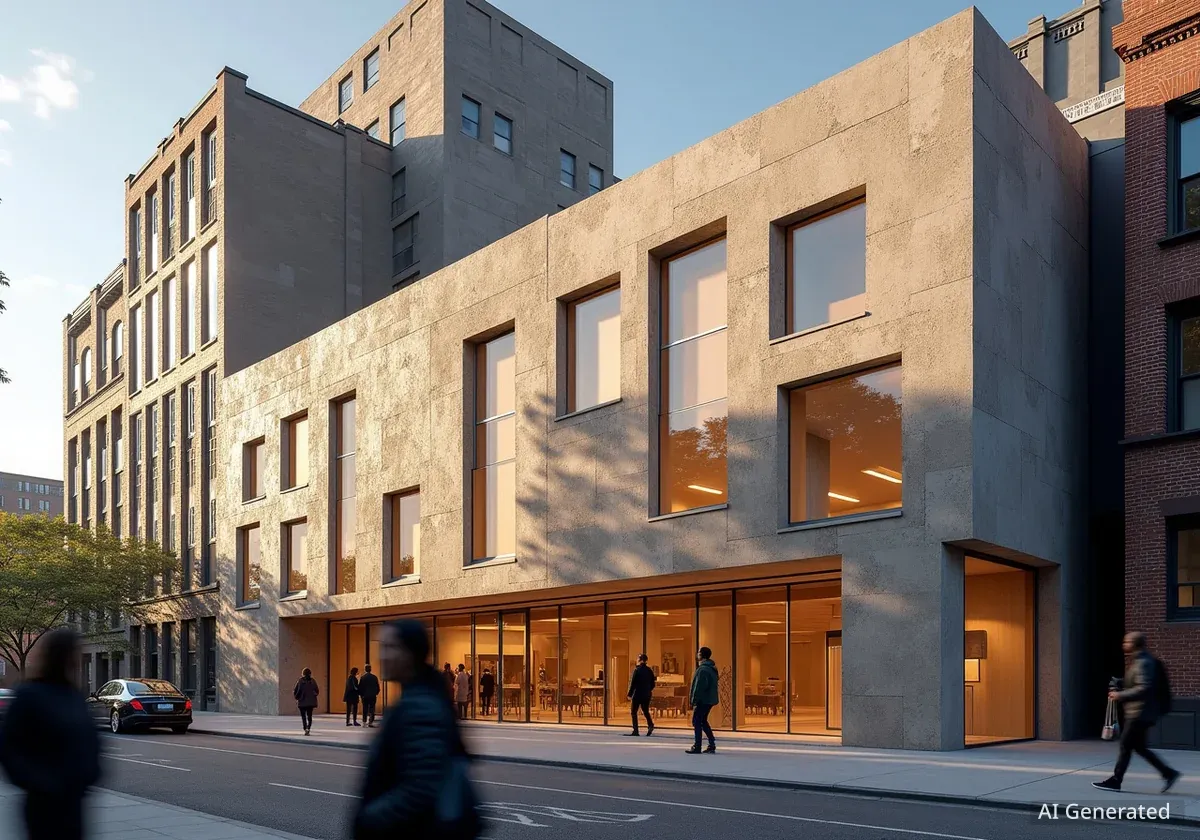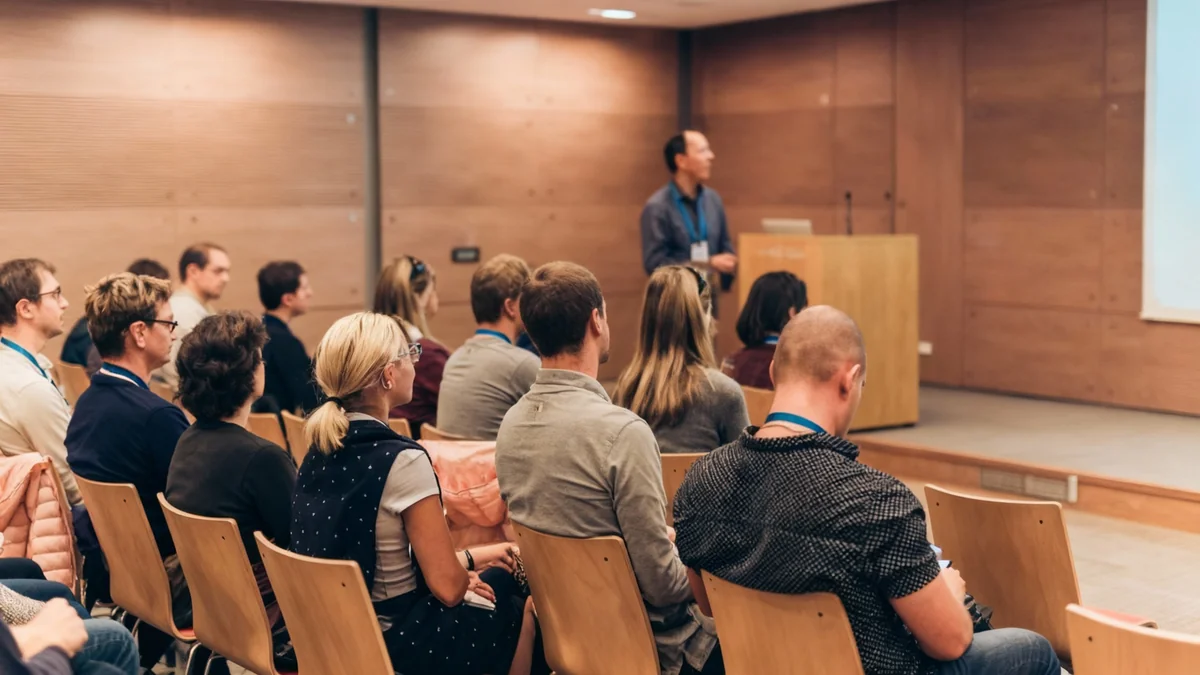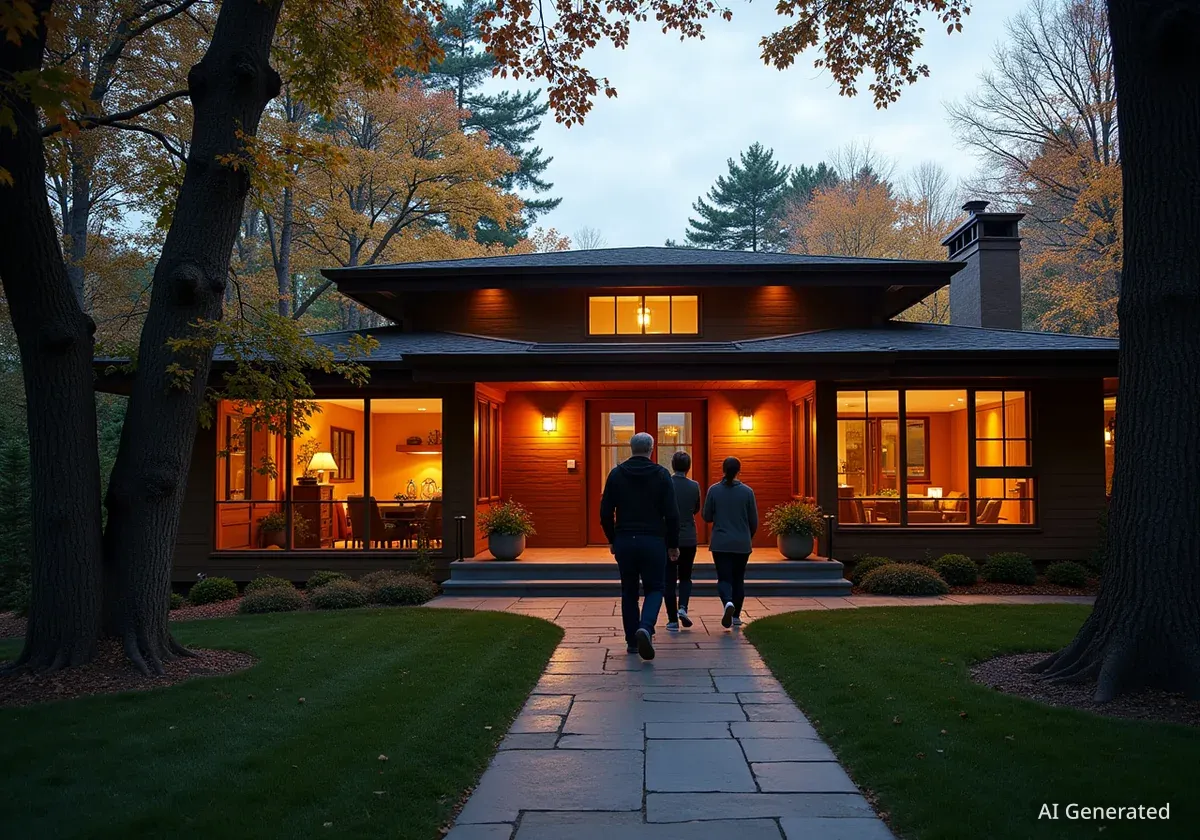A new architectural project named La Libreria is currently on display at the Venice Architecture Biennale. The installation, a conceptual work from the mind of fashion designer Diane von Furstenberg, was brought to life by the acclaimed architecture firm Diller Scofidio + Renfro. A key feature of the project is its use of an advanced textile membrane developed by the French manufacturer Serge Ferrari Group.
This innovative material, known as STFE, is a specialized polyarylate fabric that provides both structural integrity and unique aesthetic qualities. The project highlights a growing trend of cross-disciplinary collaboration, merging the worlds of high fashion, material science, and architectural design on an international stage.
Key Takeaways
- The La Libreria project is a collaboration between Diane von Furstenberg and Diller Scofidio + Renfro Architects.
- It is currently being showcased at the prestigious Venice Architecture Biennale.
- The structure is built using a specialized textile membrane called STFE, made from polyarylate.
- STFE was developed by the Serge Ferrari Group, a French company specializing in high-performance materials.
- The material is noted for its durability, optical clarity, and resistance to ultraviolet radiation.
The Concept Behind La Libreria
La Libreria, which translates to "The Library," is more than just a structure; it is an exploration of form and material. The project originated from a concept developed by Diane von Furstenberg, a celebrated figure in the fashion industry known for her iconic wrap dress and bold use of patterns and textiles. Her involvement brings a unique perspective to the architectural space, focusing on fabric, flow, and the human form.
The collaboration with Diller Scofidio + Renfro (DS+R) was a natural fit. DS+R is a New York-based design studio renowned for its work at the intersection of architecture, visual arts, and performing arts. The firm has a history of creating culturally significant and boundary-pushing projects, including the High Line in New York City and The Broad museum in Los Angeles.
For La Libreria, the team sought to translate the fluidity of fabric into a physical, inhabitable space. The project challenges traditional notions of building with rigid materials like concrete and steel, instead proposing a softer, more dynamic architectural language.
A Stage for Architectural Innovation
The Venice Architecture Biennale is one of the most important events in the global architecture calendar. Held every two years, it serves as a platform for architects and designers to showcase forward-thinking concepts and address pressing contemporary issues. Being featured at the Biennale provides projects like La Libreria with significant international visibility and positions them within the leading edge of architectural discourse.
A Breakthrough in Material Science
The successful execution of La Libreria depended entirely on finding a material that could meet the demanding vision of its creators. The solution was a specialized textile membrane developed by the Serge Ferrari Group, a French company with over 50 years of experience in flexible composite materials.
Introducing STFE Polyarylate Membrane
The material used is a specific formulation known as STFE. It is composed of polyarylate, a high-performance polyester known for its exceptional strength, stability, and resistance to environmental factors. Unlike common plastics or fabrics, polyarylate maintains its properties over a wide range of temperatures and conditions.
Key properties of the STFE membrane include:
- High Tensile Strength: The fabric can be stretched taut to create smooth, curved surfaces without sagging or deforming.
- Optical Clarity: It allows a significant amount of natural light to pass through, creating a bright and airy interior environment.
- UV Resistance: The material is inherently resistant to degradation from ultraviolet rays, ensuring a long lifespan and preventing discoloration.
- Lightweight Nature: Compared to glass or other traditional cladding materials, the textile is incredibly light, reducing the need for a heavy support structure.
What is Polyarylate?
Polyarylate is a family of aromatic polyesters. It is considered a high-performance thermoplastic, meaning it can be melted and reshaped. Its molecular structure gives it superior thermal resistance, flame retardancy, and dimensional stability compared to standard polyesters like PET (polyethylene terephthalate), which is used to make water bottles.
Design and Construction Implications
The use of a textile membrane like STFE opens up new possibilities for architectural design. It allows for the creation of complex, organic shapes and flowing forms that would be difficult or prohibitively expensive to achieve with conventional materials. For La Libreria, this meant DS+R could design a structure that feels both enclosed and open, solid and ephemeral.
The lightweight nature of the material simplifies the construction process. It requires a less substantial foundation and support system, which can reduce construction time, costs, and the overall environmental footprint of a project. The membrane is stretched over a frame, creating a tensioned fabric structure.
Beyond High-End Architecture
While the STFE membrane is currently being showcased in a high-concept architectural installation, its properties suggest potential for broader applications. Its excellent light transmission and durability make it a candidate for advanced greenhouse construction, where controlling light and creating a stable internal environment are critical.
"Innovations in material science are constantly pushing the boundaries of what is possible in architecture. Projects like La Libreria demonstrate how new textiles can redefine our understanding of space, light, and structure." - Architectural Analyst
However, the cost of such specialized materials often confines them to bespoke, high-budget projects. The manufacturing process for polyarylate and the technology required to weave it into a durable architectural fabric are complex. As with many new technologies, it is expected that the cost will decrease over time as production methods become more efficient and demand increases.
The Intersection of Disciplines
La Libreria stands as a powerful example of what can be achieved when experts from different fields collaborate. The project successfully merges Diane von Furstenberg's deep understanding of textiles and the human form with Diller Scofidio + Renfro's architectural expertise and the material innovation of the Serge Ferrari Group.
This synthesis of fashion, architecture, and material science results in a project that is both intellectually stimulating and visually compelling. It encourages visitors at the Venice Biennale to reconsider the materials that shape their environment and to imagine a future where buildings can be as light, flexible, and expressive as a piece of clothing.
As architects and designers continue to seek more sustainable and innovative building solutions, advanced materials like STFE are likely to play an increasingly important role. La Libreria is not just an exhibit; it is a glimpse into the future of construction.
